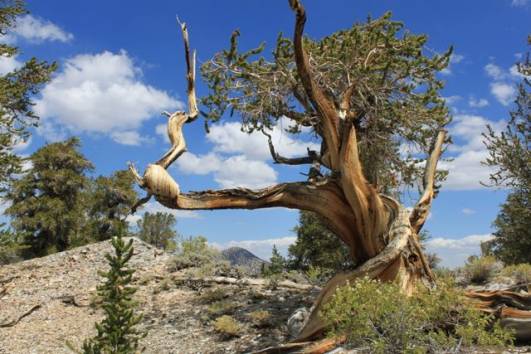Dear Ram Girl,
One possible approach to your Q might be to take one alpine plant and describe how it adapts to the dryness...and if you do that, one fascinating species is the bristlecone pine of eastern California and Nevada.
1. These beautiful trees have deep root systems to access water; also, their roots are sectional, supporting just one part of the tree so in dry times one part of the tree might die off, but not the whole tree.
2. In dry times a plant will simply slow its growth or even go dormant and stop growing altogether; so the alpine xerophytes are smaller than lowland counterparts. (This also means the wood is extremely dense and resistant to insects.)
3. The layer of debris and leaf litter, called duff, holds water in the ground. Once on Mt. Baker the Forest Service graded off the duff in a high forest and trees began to die, that is how important the duff is!
Good luck with your project, and here is one of those wonderful bristlecone pines.
